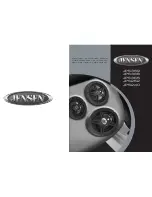
Chapter 3:
System Overview
11
The
Control Subsystem
consists of the central processing unit, program and video memory, permanent image
storage and retrieval memory, external communication interface ports, and connection to the user interface keys.
The control software includes the acoustic power and intensity software subsystem, power group monitors, and a
beamformer monitor. This software guarantees a level of patient safety by ensuring the system is operating within
acoustic power and intensity limits.
The
User Interface Subsystem
represents the software interface and form factor. The software interface is the
interaction between the user and the screen layout components. The form factor is the type of physical buttons,
location, and grouping of the buttons and the device size, shape, and weight. Dedicated controls are for high usage
activities and grouped according to the user workflow.
The
Power Subsystem
provides the system power and protects the hardware from destructive and/or unsafe
conditions by detecting failures in the system through hardware and software monitors. Detection of a fault results
in disabling of the pulser supply, and signaling of an error to the Control Group. The power subsystem includes the
battery pack and battery charging electronics.
Description of Operating Modes
2D Mode
2D mode is a two dimensional image of the amplitude of the echo signal. It is used for
location and measurement of anatomical structures and for spatial orientation during
operation of other modes. In 2D, a two-dimensional cross-section of a 3-dimensional soft
tissue structure such as the heart is displayed in real time. Ultrasound echoes of different
intensities are mapped to different gray scale or color values in the display. The outline of the
2D cross-section may be a rectangle, parallelogram, trapezoid, sector, or a full circle,
depending on the particular transducer used. 2D mode can be used in combination with any
other modes.
M Mode
“M Mode” is also known as “T-M mode” or “time-motion” mode. It is used primarily for
cardiac measurements such as valve timing and septal wall thickness when accurate timing
information is required.
Ultrasound echoes of different intensities are mapped to different gray scale values in a
scrolling display. M Mode displays time motion information of the ultrasound data derived
from a stationary beam. Depth is arranged along the vertical axis with time along the
horizontal axis. M Mode can be used alone but is normally used in conjunction with a 2D
image for spatial reference. The 2D image has a graphical line (M-line) superimposed on the
2D image indicating where the M Mode beam is located.
Color Power
Doppler
(CPD)
In CPD, a real-time two-dimensional cross-section of blood flow is displayed. The 2D
cross-section may be presented as a rectangle, parallelogram, trapezoid, sector, or a full
circle, depending on the particular transducer used.
The 2D cross-section is presented as a full color display, with various colors being used to
represent the power in blood flow echoes. Often, to provide spatial orientation, the full color
blood flow cross-section is overlaid on top of the gray scale cross-section of soft tissue
structure (2D echo). For each pixel in the overlay, the decision of whether to display CPD, gray
scale (echo) information or a blended combination is based on the relative strength of
echoes from the soft-tissue structures and from the red blood cells.
A high pass filter (wall filter) is used to remove the signals from stationary or slowly moving
structures. Tissue motion is discriminated from blood flow by assuming that blood is moving
faster than the surrounding tissue, although additional parameters may also be used to
enhance the discrimination. The power in the remaining signal after wall filtering may be
averaged over time (persistence) to present a steady state image of blood flow distribution.
Summary of Contents for MicroMaxx
Page 1: ...MicroMaxx Ultrasound System Service Manual ...
Page 6: ...vi ...
Page 10: ...4 Chapter 1 Introduction ...
Page 56: ...50 Chapter 5 Cleaning and Disinfecting ...
Page 61: ...Chapter 6 Troubleshooting 55 Control Panel Figure 6 3 Control Panel Flow Diagram ...
Page 62: ...56 Chapter 6 Troubleshooting System Figure 6 4 System Flow Diagram ...
Page 63: ...Chapter 6 Troubleshooting 57 Battery Figure 6 5 Battery Flow Diagram ...
Page 72: ...66 Chapter 7 Replacement Procedures Figure 7 10 Power Supply Screws Screws 7 ...
Page 85: ...Appendix A Parts List 79 Figure A 1 Power Supply P05471 Figure A 2 Speaker Assembly P03872 ...
Page 89: ...Appendix A Parts List 83 Figure A 8 Main PCB Assembly P05472 ...
Page 92: ...86 Appendix B Service Event Report ...
Page 98: ...92 Index ...
















































